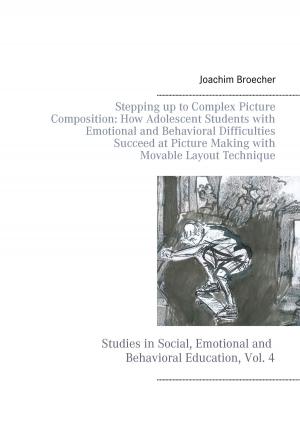A~Z Writers’ Character Quirks: A~ Z of Behaviours, Foibles, Habits, Mannerisms & Quirks for Writers to Create Fictional Characters (Writer’s Resource Series)
Nonfiction, Reference & Language, Dictionaries, Language Arts, Writing & Publishing, Writing Skills, Reference| Author: | Paula Wynne | ISBN: | 9781310916595 |
| Publisher: | Paula Wynne | Publication: | March 28, 2016 |
| Imprint: | Smashwords Edition | Language: | English |
| Author: | Paula Wynne |
| ISBN: | 9781310916595 |
| Publisher: | Paula Wynne |
| Publication: | March 28, 2016 |
| Imprint: | Smashwords Edition |
| Language: | English |
Don’t Just Create A Character ~ Create A Memorable Fictional Person
When you write a novel, the first thing to learn is how to create fictional characters, from heroes and heroines, to baddies and villains and other minor characters. Without a compelling character you don’t have a story! Whether they will be an animated object, toy or animal, a monster, alien or fantasy fabrication or real human beings, they need to be fully developed with emotions, flaws, hurts and habits or quirks.
But even if a writer creates an archetype character, a fictional person from a star sign, or a hero or heroine from the enneagram types, they must end up being a character with personality. You have to give them unique traits and characteristic to make them real and not a walking cardboard. After you've started with a basic character and then added ‘real flesh’ to your character’s bones with different personality traits and emotions, you’ll need to put a lot of thought, research and time into developing a fully-fledged individual. Another way to ensure your characters are like real people is to give them habits and quirks.
One of the hardest and most satisfying parts of writing is making your characters fully alive so your readers can recognise them, visualise them, believe in them and care about them. And worry about them so much that they keep turning the pages to see what happens to the character and how they cope with the plots twists thrown at them.
Of course, this requires careful use of story events, flashbacks, memories and dialogue. Along with disorders, traits, past hurts and personality flaws, it's also helpful to flesh characters out with distinctive quirks and habits to make them memorable and distinctive.
Quirks and habits serve several purposes in fiction. Inside, bestselling author of Pimp My Fiction, Paula Wynne explains a few major uses for character habits and quirks:
• Bringing Characters to Life with Quirks and Habits
• Identifying Characters
• Defining Character
• Creating Conflict
• Habits and Quirk Shifts
As part of the Writers’ Resource Series, the A~Z of Writers's Character Quirks will give you a long list of Behaviours, Foibles, Habits, Mannerisms & Quirks in easy to find alphabetical order to help you create memorable fictional characters.
Grab a free book on how to write a novel at Paula Wynne’s website.
Don’t Just Create A Character ~ Create A Memorable Fictional Person
When you write a novel, the first thing to learn is how to create fictional characters, from heroes and heroines, to baddies and villains and other minor characters. Without a compelling character you don’t have a story! Whether they will be an animated object, toy or animal, a monster, alien or fantasy fabrication or real human beings, they need to be fully developed with emotions, flaws, hurts and habits or quirks.
But even if a writer creates an archetype character, a fictional person from a star sign, or a hero or heroine from the enneagram types, they must end up being a character with personality. You have to give them unique traits and characteristic to make them real and not a walking cardboard. After you've started with a basic character and then added ‘real flesh’ to your character’s bones with different personality traits and emotions, you’ll need to put a lot of thought, research and time into developing a fully-fledged individual. Another way to ensure your characters are like real people is to give them habits and quirks.
One of the hardest and most satisfying parts of writing is making your characters fully alive so your readers can recognise them, visualise them, believe in them and care about them. And worry about them so much that they keep turning the pages to see what happens to the character and how they cope with the plots twists thrown at them.
Of course, this requires careful use of story events, flashbacks, memories and dialogue. Along with disorders, traits, past hurts and personality flaws, it's also helpful to flesh characters out with distinctive quirks and habits to make them memorable and distinctive.
Quirks and habits serve several purposes in fiction. Inside, bestselling author of Pimp My Fiction, Paula Wynne explains a few major uses for character habits and quirks:
• Bringing Characters to Life with Quirks and Habits
• Identifying Characters
• Defining Character
• Creating Conflict
• Habits and Quirk Shifts
As part of the Writers’ Resource Series, the A~Z of Writers's Character Quirks will give you a long list of Behaviours, Foibles, Habits, Mannerisms & Quirks in easy to find alphabetical order to help you create memorable fictional characters.
Grab a free book on how to write a novel at Paula Wynne’s website.















